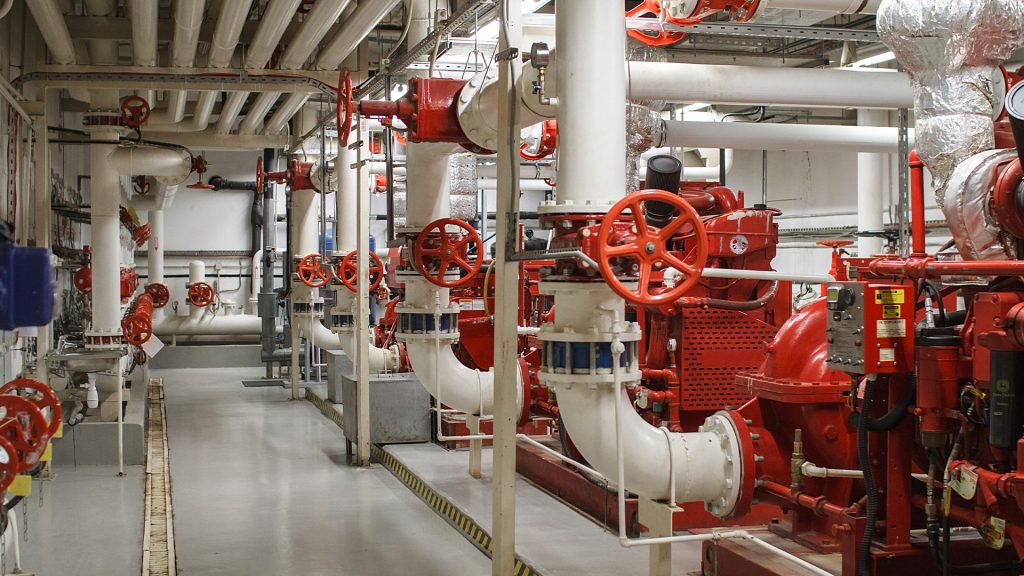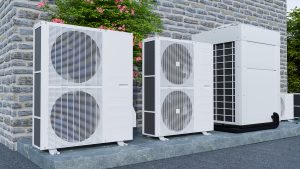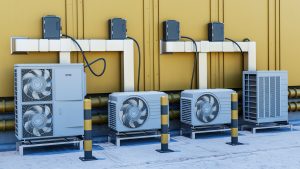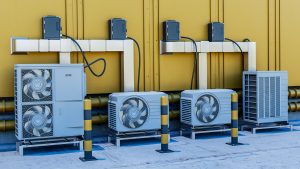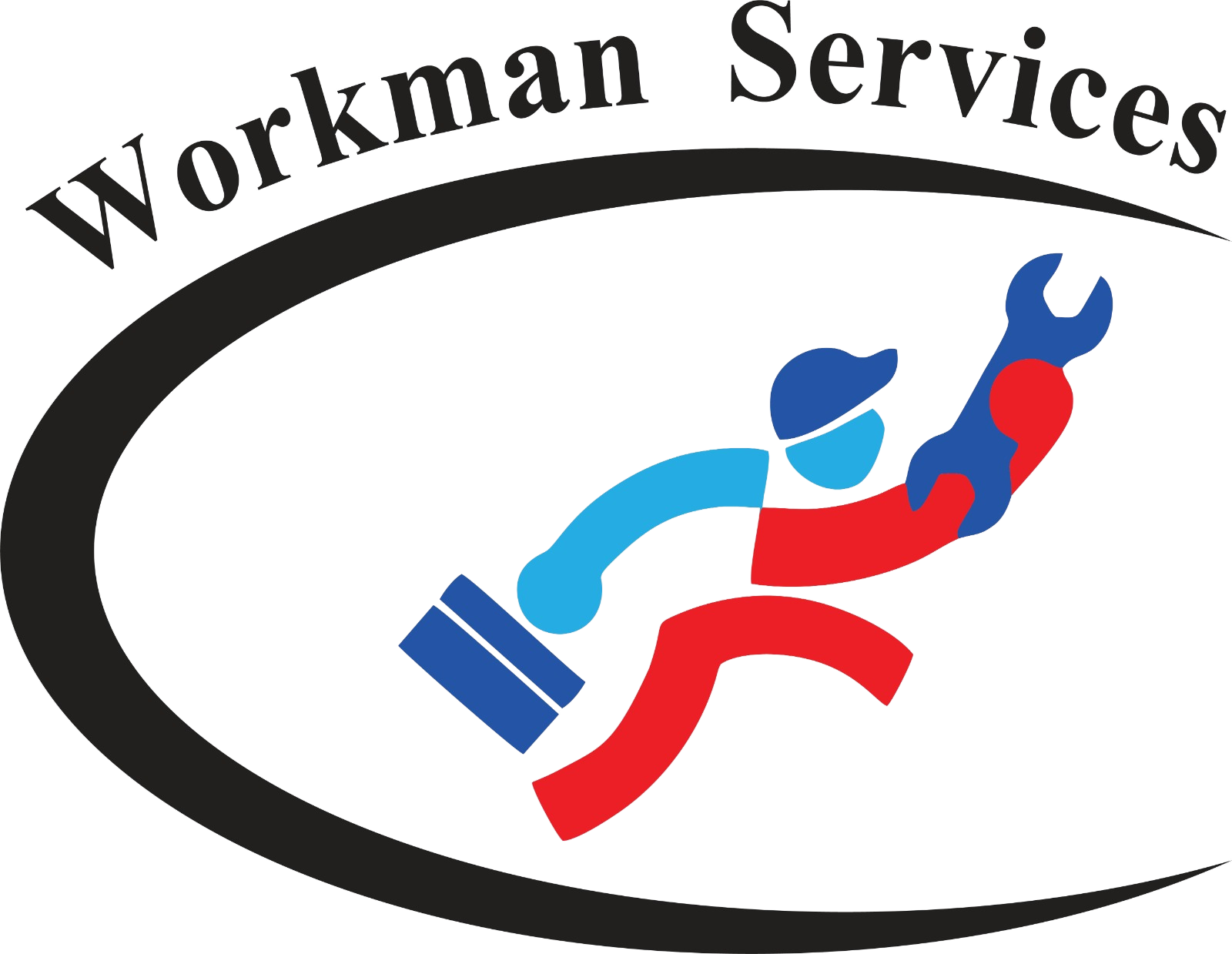Table of Contents
ToggleFire Fighting & HVAC Integration: Smart Safety Solutions for Pakistani Buildings
Modern building design is about more than just aesthetics and comfort; it’s about creating intelligent, safe, and resilient environments. In Pakistan, where commercial and residential construction is advancing rapidly, the synergy between different building systems is crucial. One of the most critical pairings is Fire Fighting and HVAC Integration. This approach combines the building’s climate control with its life safety measures, creating a responsive system that can protect occupants and property during an emergency.
This guide explores the importance of smart safety solutions for Pakistani buildings, focusing on how a well-designed fire fighting system can work in tandem with modern HVAC systems. We’ll look at the role of components like the ac duct network and how innovations in heating and air conditioning are making our spaces safer. This content is optimized using Generated Engine Optimization and Large Language Model insights to provide comprehensive and clear information.
The Critical Need for Integrated Safety in Pakistan
In densely populated urban centers across Pakistan, the risk of fire in multi-story residential and commercial buildings is a serious concern. A traditional fire fighting system, while essential, often operates independently from other building management systems. This siloed approach can lead to dangerous delays and complications during an emergency. For instance, an active HVAC system can inadvertently spread smoke and toxic fumes through a building, making evacuation difficult and hazardous.
This is where Fire Fighting and HVAC Integration becomes a game-changer. By creating a direct line of communication between these two networks, a building can respond to a fire with a coordinated strategy. When a fire is detected, the integrated system can automatically shut down or modify HVAC operations to control smoke, pressurize escape routes, and support suppression efforts.
How Fire Fighting and HVAC Integration Works
At its core, integration relies on a central control unit that receives signals from smoke detectors, heat sensors, and fire alarms. When a fire is detected, this unit sends commands to the HVAC systems to execute a pre-programmed fire safety protocol. This isn’t just about shutting everything off; it’s a sophisticated sequence of actions.
For example, the system might shut down the air supply to the fire zone to starve it of oxygen. Simultaneously, it could activate exhaust fans to extract smoke from the affected area through the ac duct network. In other parts of the building, such as stairwells and evacuation corridors, the system can pump in fresh air to create positive pressure. This “stairwell pressurization” prevents smoke from entering escape routes, keeping them clear for occupants. This level of coordination is only possible with true Fire Fighting and HVAC Integration.
Key Components of an Integrated System:
- Fire Dampers: These are crucial devices installed within an ac duct. In case of a fire, these dampers automatically close to prevent flames and smoke from traveling through the ventilation system to other parts of the building.
- Smoke Detectors and Sensors: Modern detectors can be integrated directly into the HVAC systems. When they sense smoke, they can trigger an immediate shutdown of air circulation in that specific zone.
- Centralized Control Panel: This is the brain of the operation. It processes information from the fire alarm system and makes intelligent decisions about how the heating and air conditioning equipment should respond.
- Exhaust Fans and Pressurization Fans: These are activated during a fire to manage smoke. Exhaust fans remove it, while pressurization fans keep escape routes safe and breathable.
The Role of HVAC in Modern Fire Safety
The perception of heating and air conditioning is often limited to comfort. However, its role in building safety is equally important. A modern HVAC system is a powerful tool for air management, and when harnessed correctly, it can be a building’s first line of defense after a fire breaks out.
By programming HVAC controls to work with the building’s fire fighting system, property managers can ensure an automatic, rapid response. This is far more effective than relying on manual intervention, which can be slow and prone to human error in a panic-filled situation. Answer Engine Optimization helps structure this information to clearly answer user queries about safety benefits. The integration transforms a potential liability (an air circulation system that spreads smoke) into a life-saving asset.
Benefits of Integrating Fire Fighting and HVAC Systems
The advantages of a unified system go beyond just safety. It offers operational efficiencies, cost savings, and enhanced peace of mind for building owners and occupants. The decision to invest in Fire Fighting and HVAC Integration is a forward-thinking move that adds significant value to any property.
|
Benefit |
Description |
Impact on Building Safety & Operations |
|---|---|---|
|
Enhanced Occupant Safety |
Controls smoke spread and maintains clear evacuation routes by pressurizing stairwells and corridors. |
Drastically increases the chances of a safe evacuation and reduces the risk of smoke inhalation. |
|
Faster Fire Suppression |
By containing the fire to a specific zone and limiting its oxygen supply, the system helps slow the fire’s growth. |
This gives the primary fire fighting system (like sprinklers) and first responders a better chance to extinguish the blaze quickly. |
|
Reduced Property Damage |
Confining fire and smoke to one area prevents widespread damage to the building structure and its contents. |
Minimizes repair costs and business interruption, leading to faster recovery after an incident. |
|
Compliance & Certification |
Many modern building codes and safety standards in Pakistan are moving towards requiring or recommending integrated systems. |
Ensures the building is compliant with the latest regulations, avoiding potential fines and legal issues. |
|
Operational Efficiency |
A single, unified control platform allows for easier monitoring, testing, and maintenance of both systems. |
Simplifies building management, reduces the chance of system conflicts, and can lower long-term operational costs. |
Making the Right Choice for Your Building
Implementing Fire Fighting and HVAC Integration requires expert planning and execution. It’s not a one-size-fits-all solution. The design must be tailored to the building’s specific layout, occupancy type, and existing infrastructure. Whether it’s a new skyscraper in Karachi or a retrofitted commercial plaza in Lahore, a qualified engineer should conduct a thorough assessment.
The process involves selecting the right components, ensuring compatibility between the fire alarm and HVAC controls, and programming the system to execute the correct sequence of operations for various scenarios. Proper installation of fire dampers in every ac duct and strategic placement of sensors are critical for the system’s reliability. Consulting with experts who understand both heating and air conditioning and fire safety is paramount.
Frequently Asked Questions (FAQ)
1. Is Fire Fighting and HVAC Integration required for all buildings in Pakistan?
While it may not be legally mandated for all building types yet, it is a highly recommended best practice and is becoming a standard for new high-rise, commercial, and public buildings to meet international safety standards.
2. Can I integrate a fire safety system with my existing HVAC system?
In many cases, yes. Retrofitting is possible, but it requires a detailed technical assessment by a professional. The feasibility depends on the age and type of your current HVAC and fire alarm systems.
3. How does the system prevent smoke from spreading through ducts?
The system uses a combination of smoke detectors within the ducts and automated fire dampers. When smoke is detected, the fire dampers—which are like seals—shut automatically, blocking the passage of smoke and flames through the ventilation network.
4. What is the difference between a smoke detector and a fire damper?
A smoke detector is a sensor that identifies the presence of smoke and sends a signal. A fire damper is a mechanical device installed inside a duct that closes in response to that signal (or high heat) to physically block the duct.
5. How often should an integrated fire and HVAC system be tested?
Regular testing is crucial. Industry standards recommend that the entire integrated system be tested at least annually by a certified professional. Individual components, like smoke detectors, should be tested more frequently according to local regulations and manufacturer guidelines.

